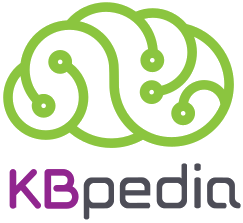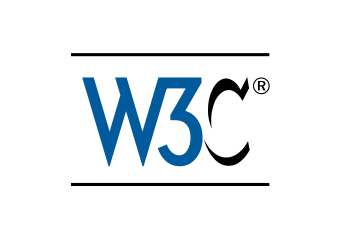
KBpedia is an open-source knowledge graph that combines seven leading public knowledge bases into an integrated and computable structure. KBpedia has 98% coverage of Wikidata and nearly complete coverage of Wikipedia. The KBpedia distro includes its upper ontology (KKO), full knowledge graph, mappings to the major knowledge bases, and 70 largely disjoint typologies. The latest KBpedia release is version 2.50, which expands its usefulness to eCommerce and logistics.
KBpedia is a comprehensive knowledge structure for promoting data interoperability and knowledge-based artificial intelligence, or KBAI. The KBpedia knowledge structure combines seven 'core' public knowledge bases — Wikipedia, Wikidata, schema.org, DBpedia, GeoNames, OpenCyc, and standard UNSPSC products and services — into an integrated whole. KBpedia's upper structure, or knowledge graph, is the KBpedia Knowledge Ontology. We base KKO on the universal categories and knowledge representation insights of the great 19th century American logician, polymath and scientist, Charles Sanders Peirce.
KBpedia, written primarily in OWL 2, includes more than 58,000 reference concepts, mapped linkages to about 40 million entities (most from Wikidata), and 5,000 relations and properties, all organized according to about 70 modular typologies that can be readily substituted or expanded. We test candidates added to KBpedia using a rigorous suite of logic and consistency tests — and best practices — before acceptance. The result is a flexible and computable knowledge graph that can be sliced-and-diced and configured for all sorts of machine learning tasks, including supervised, unsupervised and deep learning.
KBpedia, KKO and its mapped information can drive multiple use cases such as providing a computable framework over Wikipedia and Wikidata, supervised and unsupervised machine learning, creating word embedding models, fine-grained entity recognition and tagging, relation and sentiment extractors, and categorization. Knowledge-based AI models may be set up and refined with unprecedented speed and accuracy by leveraging the integrated KBpedia structure.
To learn more, explore the KBpedia knowledge graph, try out the KBpedia SPARQL endpoint, or download resources.

Practical guidance on KR, knowledge graphs, semantic technologies, and KBpedia
$25 in softcover*
*for Springer subscribers
Uses
 Concept Tagging
Concept Tagging
Expand KBpedia's more than 58,000 general concepts with ones relevant to your own business and domain, and then tag all forms of document and text input
 Entity Tagging
Entity Tagging
Add your specific data to the more than 40 million entries already in KBpedia to tag chosen entities of interest and to disambiguate references
 Mapping
Mapping
Mapping is essential to bring in new knowledge bases and to integrate your existing vocabularies, schema, and instance data to work within the KBpedia structure
 Data Integration
Data Integration
The consistent and coherent scaffolding provided by KBpedia is a computable basis for incorporating new data, ensuring that your data integration efforts are fast and logical
 Semantic Search
Semantic Search
Information grounded in a knowledge graph means you can now go beyond labels to deal with what things mean and to broaden search by inference and semsets
 Machine Learning
Machine Learning
The rich set of features and structure in KBpedia translates into fast setups and nearly automatic support for all leading AI machine learning techniques




